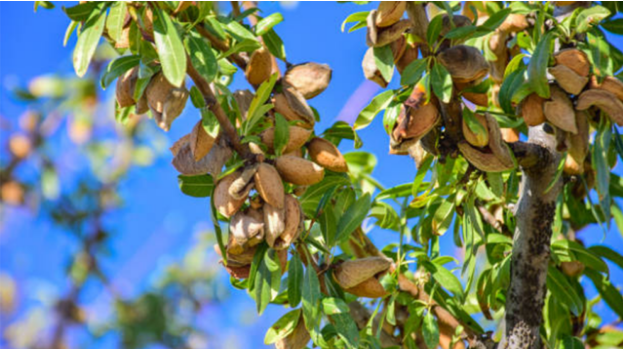Your cart is currently empty!
Harnessing Clouds | The Promise And Challenges Of Cloud Seeding
Few things are as vital as water in the growth of our human endeavor. It sustains life, powers industries, and shapes landscapes. Yet, as climate change continues to disrupt weather patterns and exacerbate droughts, water scarcity has become an increasingly urgent challenge. For both governments and businesses, water will become a top issue in the coming years.
Enter Cloud Seeding, a technology that has quietly existed for nearly eight decades but is now gaining renewed attention and momentum. Cloud seeding involves deliberately modifying clouds to enhance precipitation. This technique offers a potential solution to water scarcity in arid regions. Matching moisture to complement the growth of crops in their most productive seasons.
History Of Cloud Seeding
Cloud seeding has been a journey from scientific curiosity to practical application. Marked by innovation, perseverance, and a commitment to addressing one of humanity’s most pressing problems. Let’s delve into the story of cloud seeding by exploring its origins.
The most common chemicals used for cloud seeding include silver iodide, potassium iodide and dry ice (solid carbon dioxide). First experimented with by Louis Gathmann in 1891. Then put into practice in America in 1946. Just after the end of World War II.
The Science, Mechanics, And Applications Of Cloud Seeding
At its core, cloud seeding relies on introducing nucleating agents, such as silver iodide. These agents are sent into clouds to stimulate the formation of ice crystals and enhance precipitation. While the concept may seem straightforward, the execution requires precision and an understanding of atmospheric dynamics.
The key to cloud seeding’s success is the ability to identify suitable conditions and accurately measure the resulting precipitation. Advances in radar technology have enabled researchers to assess cloud viability and track seeding outcomes. New accuracy will pave the way for commercial applications.
Who Purchases Cloud Seeding Services?
Both private and public entities are involved. Private buyers, such as ski resorts like Vail, invest in cloud seeding to enhance snowfall on their slopes. On the public side, areas like Pinal County in Arizona and the Sacramento Municipal Utility District engage in cloud seeding to augment water resources. Both in their watersheds and the California State Water Project respectively.
The California State Water Project (SWP) is a multi-purpose water storage and delivery system that extends more than 705 miles or two-thirds the length of California. A collection of canals, pipelines, reservoirs, and hydroelectric power facilities delivers clean water to 27 million Californians, 750,000 acres of farmland, and businesses throughout our state. The farmland in California is used to grow almonds, pistachios, raisins and more for the entire world to consume. While cloud seeding initiatives are commendable, they operate on a small scale. Their yields have been small and slow. They are helping but not stopping the widespread drought affecting the West.
Companies like Rainmaker deploy drones equipped with specialized dispensing systems to target specific areas with precision. This maximizes the effectiveness of seeding operations. The potential impact is substantial, with studies indicating significant increases in precipitation over target areas.

From Berkeley To The Clouds: A Journey Of Finding Purpose
Our story begins with an unexpected journey into the world of water. Initially skeptical about working in water-related fields, a young entrepreneur found inspiration during his senior year at Berkeley. Encouraged by the potential to address critical water challenges. Augustus Doricko embarked on a path that would lead him to the frontier of weather modification.
Augustus Doricko is driven by a deep understanding of water policy and infrastructure. He recognized the inherent limitations of traditional approaches to water conservation. While important, simply reducing consumption or improving efficiency would not suffice. Averting the agricultural and ecological collapse in the water-stressed American Southwest would take several partners working together.

Augustus Doricko, Starting The Business Rainmaker.
Determined to make a difference, Augustus Doricko founded Rainmaker, a company dedicated to harnessing the power of cloud seeding. The business’s goal is to produce water transparently and sustainably. But before leaping, he sought validation from the scientific community, attending conferences and studying decades of research on cloud seeding.
The breakthrough came with the Snowy Project, a collaborative effort that demonstrated the efficacy of radar-based cloud seeding. Researchers validated the technology’s potential by precisely measuring the water produced through operations.
With this knowledge, Rainmaker! set out to revolutionize cloud seeding, leveraging advancements in drone technology and radar forecasting to scale up operations. The goal was ambitious yet clear: to augment water supplies in water-stressed regions and mitigate drought impacts.
Addressing Concerns For Safety, Scalability, and Environmental Impact
As with any emerging technology, cloud seeding has challenges and concerns. Critics raise questions about nucleating agents’ safety, operations’ scalability, and the potential environmental impact of widespread manipulating weather systems. However, proponents argue that silver iodide, the primary nucleating agent used is safe and environmentally benign. Extensive research has shown negligible accumulation of silver iodide in watersheds, with no discernible harm to ecosystems or human health.
Moreover, advancements in seeding techniques and the development of organic nucleating agents offer promising avenues. The goal is to enhance safety and efficacy while minimizing environmental impact. As cloud seeding programs expand, careful monitoring and regulation will be essential to mitigate any unintended consequences.
The Future Of Scaling Up Cloud Seeding
As the urgency of water scarcity grows, so does the imperative to scale up water generation efforts. From the deserts of California to the mountains of Utah, regions worldwide are exploring cloud seeding. It is a viable strategy for augmenting water supplies and mitigating drought.
Looking ahead, the potential extends beyond mere precipitation enhancement. By harnessing the power of weather modification, we may unlock new possibilities for ecosystem restoration, agricultural resilience, and climate adaptation.
However, as we venture further into geoengineering, we must proceed cautiously and humbly. Cloud seeding represents a powerful tool in our arsenal against water scarcity. Its deployment must be guided by rigorous scientific inquiry, ethical considerations, and transparent governance.
Ultimately, the journey of cloud seeding is not just a story of technological innovation but a testament to human ingenuity. Significantly, our capacity to confront future water issues is one of the greatest challenges. Preparing for the future, we seek solutions that sustain life, protect our planet, and inspire hope for future generations.








